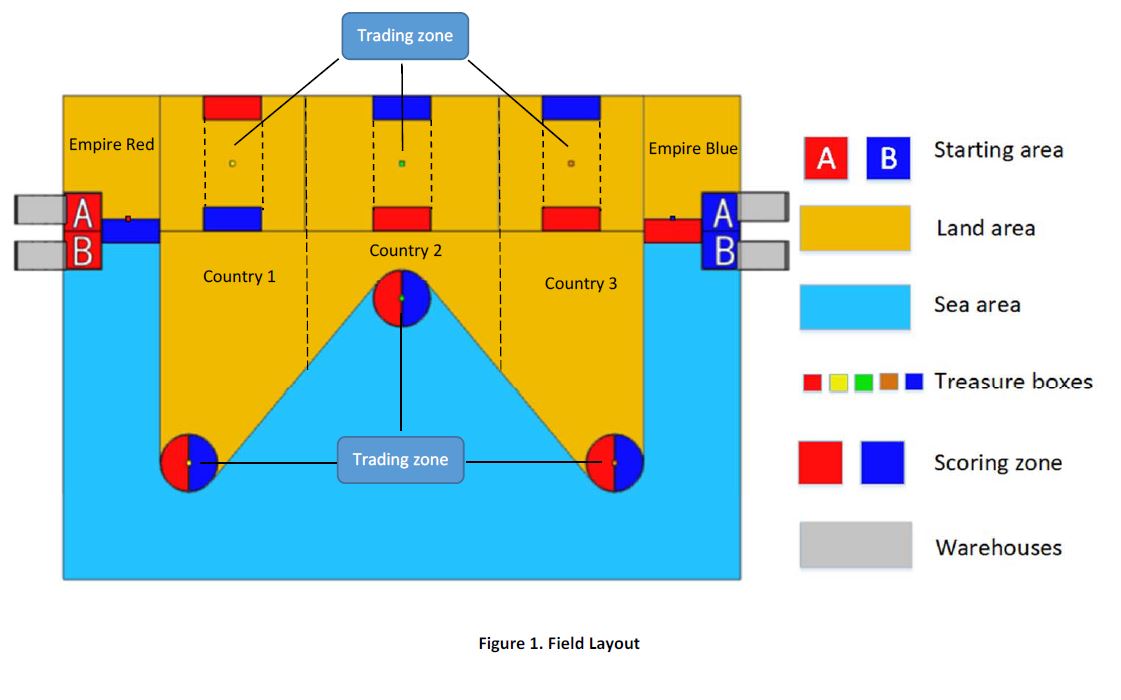Silk Road
[Abstract]
In the ancient world, there were two empires (red team and blue team) on
both sides of the continent, and they both needed to trade with others
countries on the continent. Thus, there are two trading routes between the
two empires and other countries: Silk Road.
Now the two empires send a
caravan and a ship to each other. The caravan will trade inland and go over
the mountains and the ship will cross the ocean, sell goods to countries
along the way and get their treasure boxes as gifts. After traveling the
other countrises, the caravan and the ship will arrive at the other empire,
and finally return to their homeland with treasures and build a pagoda which
symbolizes civilizations and prosperity.
Your team will design and build two robots to transfer goods to the other
countries
and get treasures from the other countries back to homeland to
build a treasure
pagoda. The object of the game is to score points by
trading goods and building
pagoda.
[Competition rule]
-
The game will be played on a rectangular map consisting of sea and a continent
(Figure 1). There are steps for the land route. The sea route is close to the
coast.
-
There are two starting areas on both left and right sides. Each starting area
has two square zones for placing robots before starting, square A for land robot
and square B for sea robot. The square A is also used for building the treasure
pagoda later. Each team has two warehouses used to store total 30 goods (table
tennis balls).
-
There are three countries between two empires. Each country has two trading
zone, one inland and one close to the sea. Each trade zone has two scoring zones
for two teams. Between two scoring zones, there are towers where the treasures
placed on the top. The treasures are wood boxes with different color for 2
different countries and empires, and the size is 50x50x50mm3. In addition, the
red and blue empires have the scoring zone and a treasure for each other.
[Competition Field]

Rule